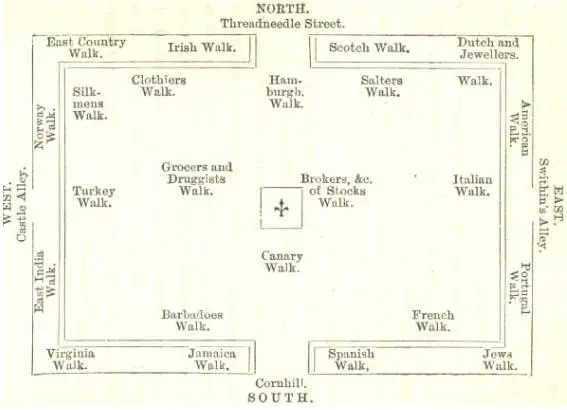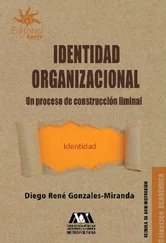Manoel Gonzales - London in 1731
Здесь есть возможность читать онлайн «Manoel Gonzales - London in 1731» — ознакомительный отрывок электронной книги совершенно бесплатно, а после прочтения отрывка купить полную версию. В некоторых случаях можно слушать аудио, скачать через торрент в формате fb2 и присутствует краткое содержание. Жанр: foreign_antique, foreign_prose, на английском языке. Описание произведения, (предисловие) а так же отзывы посетителей доступны на портале библиотеки ЛибКат.
- Название:London in 1731
- Автор:
- Жанр:
- Год:неизвестен
- ISBN:нет данных
- Рейтинг книги:5 / 5. Голосов: 1
-
Избранное:Добавить в избранное
- Отзывы:
-
Ваша оценка:
- 100
- 1
- 2
- 3
- 4
- 5
London in 1731: краткое содержание, описание и аннотация
Предлагаем к чтению аннотацию, описание, краткое содержание или предисловие (зависит от того, что написал сам автор книги «London in 1731»). Если вы не нашли необходимую информацию о книге — напишите в комментариях, мы постараемся отыскать её.
London in 1731 — читать онлайн ознакомительный отрывок
Ниже представлен текст книги, разбитый по страницам. Система сохранения места последней прочитанной страницы, позволяет с удобством читать онлайн бесплатно книгу «London in 1731», без необходимости каждый раз заново искать на чём Вы остановились. Поставьте закладку, и сможете в любой момент перейти на страницу, на которой закончили чтение.
Интервал:
Закладка:
On the east side five niches, one of which is vacant, the other filled, viz.: —
1. The most northerly contains two statues, viz., of King William and Queen Mary, subscribed Gulielmus III. Rex , & Maria II. Regina , A.D. 1688. S. P. Q. Londin’ Optim Principibus , P. C. 1695. 2. Anna Regina Dei Gratia Mag. Britan’ Franciæ & Hiberniæ , 1701. 3. George I. inscribed Georgius D. G. Magnæ Britan’ Franciæ & Hiberniæ Rex , Anno Dom. 1714. S.P.Q.L. 4. Southerly the statue of King George II. in the habiliment of a Cæsar, wreathed on the head, and a battoon or truncheon in his hand, little differing from that of Charles II. in the centre of the area, only in looking northward; inscribed Georgius II. D. G. Mag. Brit. Fra. & Hib. Rex , Anno Dom. 1727. S.P.Q.L.
On the four sides of the piazza within the Exchange are twenty-eight niches, which are all vacant yet, except one near the north-west angle, where is the figure of Sir Thomas Gresham. The piazza itself is paved with black and white marble, and the court, or area, pitched with pebbles; in the middle whereof is the statue of King Charles II. in a Roman habit, with a battoon in his hand, erected on a marble pedestal, about eight feet high and looking southward; on which side of the pedestal, under an imperial crown, wings, trumpet of fame, sceptre and sword, palm branches, &c., are these words inscribed, viz.: —
Carolo II. Cæsari Britannico , Patriæ Patri , Regum Optimo Clementissimo Augustissimo , Generis Humani Deliciis , Utriusq ; Fortunæ Victori , Pacis Europæ Arbitro , Marium Domino , ac Vindici Societatis Mercatorum Adventur’ Angliæ , quæ per CCCC jam prope Annos Regia benignitate floret , Fidei Intemeratæ & Gratitudinis æternæ hoc Testimonium venerabunda posuit , Anno Salutis Humanæ 1684.
On the west side of the pedestal is neatly cut in relievo the figure of a Cupid reposing his right hand on a shield containing the arms of England and France quartered, and in his left hand a rose.
On the north side are the arms of Ireland on a shield, supported by a Cupid.
On the east side the arms of Scotland, with a Cupid holding a thistle all in relievo.
The inner piazza and court are divided into several stations, or walks, where the merchants of the respective nations, and those who have business with them, assemble distinctly; so that any merchant or commander of a vessel is readily found, if it be known to what country he trades. The several walks are described in the following ground-plot of the Exchange: —

Near the south gate is a spacious staircase, and near the north gate another, that lead up to the galleries, on each side whereof are shops for milliners and other trades, to the number of near two hundred, which brought in a good revenue at first, nothing being thought fashionable that was not purchased there; but the milliners are now dispersed all over the town, and the shops in the Exchange almost deserted.
8. Langbourn Ward, so called of a bourne , or brook, that had its source in it, and run down Fenchurch Street, contains these principal streets: part of Lombard Street, part of Fenchurch Street, part of Lime Street, and part of Gracechurch Street, with part of the courts, lanes, and alleys in them, particularly White Hart Court, Exchange Alley, Sherbourne Lane, Abchurch Lane, St. Nicholas Lane, Mark Lane, Mincing Lane, Rood Lane, Cullum Court, Philpot Lane, and Braben Court.
The public buildings in this ward are, the Post Office, Ironmongers’ Hall, Pewterers’ Hall; the churches of Allhallows, Lombard Street, St. Edmund’s, Lombard Street, St. Mary Woolnoth, St. Dionis Backchurch, and St. Allhallows Staining.
The Post Office is situated on the south side of Lombard Street, near Stocks Market. It was the dwelling-house of Sir Robert Vyner, in the reign of King Charles II. The principal entrance is out of Lombard Street, through a great gate and passage that leads into a handsome paved court, about which are the several offices for receiving and distributing letters, extremely well contrived.
Letters and packets are despatched from hence every Monday to France, Italy, Spain, Portugal, Flanders, Germany, Sweden, Denmark, Kent, and the Downs.
Every Tuesday to the United Netherlands, Germany, Sweden, Denmark, and to all parts of England, Scotland, and Ireland.
Every Wednesday to Kent only, and the Downs.
Every Thursday to France, Spain, Portugal, Italy, and all parts of England and Scotland.
Every Friday to the Austrian and United Netherlands, Germany, Sweden, Denmark, and to Kent and the Downs.
Every Saturday to all parts of England, Scotland, and Ireland.
The post goes also every day to those places where the Court resides, as also to the usual stations and rendezvous of His Majesty’s fleet, as the Downs, Spithead, and to Tunbridge during the season for drinking waters, &c.
Letters and packets are received from all parts of England and Scotland, except Wales, every Monday, Wednesday, and Friday; from Wales every Monday and Friday; and from Kent and the Downs every day.
His Majesty keeps constantly, for the transport of the said letters and packets, in times of peace,
Between England and France, three packet-boats; Spain, one in a fortnight; Portugal, one ditto; Flanders, two packet-boats; Holland, three packet-boats; Ireland, three packet-boats.
And at Deal, two packet-boats for the Downs.
Not to mention the extraordinary packet-boats, in time of war with France and Spain, to the Leeward Islands, &c.
A letter containing a whole sheet of paper is conveyed eighty miles for 3d., and two sheets 6d. and an ounce of letters but 1s. And above eighty miles a single letter is 4d., a double letter 8d., and an ounce 1s. 4d.
9. Billingsgate Ward is bounded by Langbourn Ward towards the north, by Tower Street Ward on the east, by the River Thames on the south, and by Bridge Ward Within on the west. The principal streets and places in this ward are, Thames Street, Little East Cheap, Pudding Lane, Botolph Lane, Love Lane, St. Mary Hill, and Rood Lane.
The wharves, or quays, as they lie on the Thames side from east to west, are, Smart’s Quay, Billings gate, Little Somer’s Quay, Great Somer’s Quay, Botolph Wharf, Cox’s Quay, and Fresh Wharf which last is the next quay to the bridge; of which Billingsgate is much the most resorted to. It is a kind of square dock, or inlet, having quays on three sides of it, to which the vessels lie close while they are unloading. By a statute of the 10th and 11th of William III. it was enacted, “That Billingsgate should be a free market for fish every day in the week, except Sundays. That a fishing-vessel should pay no other toll or duty than the Act prescribes, viz., every salt-fish vessel, for groundage, 8d. per day, and 20d. per voyage; a lobster boat 2d. per day groundage, and 13d. the voyage; every dogger boat, or smack with sea-fish, 2d. per day groundage, and 13d. the voyage; every oyster vessel, 2d. per day groundage, and a halfpenny per bushel metage. And that it should be lawful for any person who should buy fish in the said market to sell the same in any other market or place in London, or elsewhere, by retail.” And because the fishmongers used to buy up great part of the fish at Billingsgate, and then divide the same among themselves, in order to set an extravagant price upon them, it was enacted, “That no person should buy, or cause to be bought, in the said market of Billingsgate, any quantity of fish, to be divided by lot among the fishmongers, or other persons, with an intent to sell them afterwards by retail; and that no fishmonger should buy any more than for his own use, on pain of £20.” And by the 6th Annæ
Читать дальшеИнтервал:
Закладка:
Похожие книги на «London in 1731»
Представляем Вашему вниманию похожие книги на «London in 1731» списком для выбора. Мы отобрали схожую по названию и смыслу литературу в надежде предоставить читателям больше вариантов отыскать новые, интересные, ещё непрочитанные произведения.
Обсуждение, отзывы о книге «London in 1731» и просто собственные мнения читателей. Оставьте ваши комментарии, напишите, что Вы думаете о произведении, его смысле или главных героях. Укажите что конкретно понравилось, а что нет, и почему Вы так считаете.












